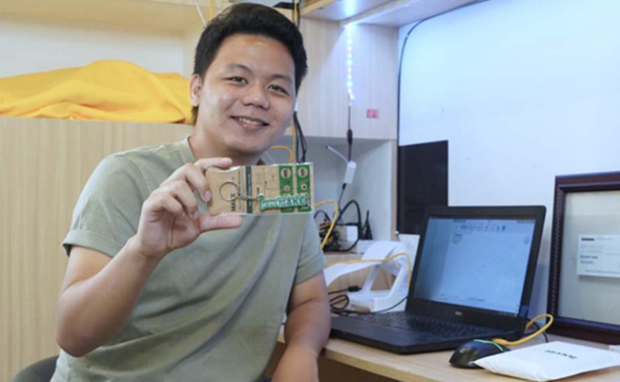Skin cancer soap earns US teen award
A young scientist developed a soap that “washes away” skin cancer, serving as a significantly more affordable alternative to existing medical treatments. As a result, 14-year-old Heman Bekel earned the top prize in 3M’s Young Scientist’s Challenge, an annual competition that encourages kids and teens to create solutions to everyday problems.
Most assume the most groundbreaking discoveries from the largest institutions. However, Bekel proved to the world that even teenagers could make a difference. His knowledge, curiosity, and determination enabled him to produce something magnificent. Perhaps his story and his discovery could inspire you to create something that improves countless lives.
This article will discuss Heman Bekel’s skin cancer soap. Later, I will cover another innovation from the opposite side of the world.
How does the skin cancer soap work?
NPR interviewed Heman Bekel to understand him and his invention more deeply. Here’s how the young scientist explained his Melanoma Treating Soap or MTS:
“MTS is a compound-based bar of soap, and it’s charged with different cancer-fighting chemicals. The main one being this agent called Imidazoquinoline,” the young inventor said. The video above explains the soap consists of a “50-30-20” ratio of salicylic acid, glycolic acid, and tretinoin, respectively.
“It’s this drug that is commonly used for different antifungals and acne treatments and has recently been looked into in the field of skin cancer. I really realized that it was a viable option for topical applications, like a soap.”
“Using that drug, as well as other components like a nanolipid-based particle transporter that [delivered the] drug throughout the skin, was actually a really effective solution for some cancer.”
You may also like: 3D printing hair and skin is now possible
“The color [of the soap] is a bit of a dark type of white, and it has a little bit of a bumpy texture to it, which could be a good exfoliant. It does have a strong potent medicine smell to it.”
“Of course, it isn’t the worst-smelling thing. And in terms of how it feels, it does feel a little bit stickier because it has this lipid-based nanoparticle, and the whole point of it is that even once you wash off the soaps, the medicinal parts will stay on your skin.”
“Of course, I try not to use too much of it because I do not have skin cancer. Even though the number one priority is the science behind it, I hope it’s at least a relatively aesthetic bar of soap as well. It also has biodegradable packaging because a lot of the demographic of this bar of soap might not have access to recycling.”
What are the other recent inventions?

There’s another award-winning inventor on the other side of the world. Filipino inventor Jeremy De Leon won the prized James Dyson Award this year for his unique keychain microscope.
He wanted to make microbiology more accessible for students and teachers. “Usually, in a school laboratory, a microscope is shared by around ten students,” he said.
That is why he invented the Make-roscope, a keychain microscope that lets you view samples with a smartphone. Also, he had a team with the following members:
- Clyde Matthew Condor
- Danica Marie Dumalagan
- Klyle Alexandre Luchavez
- Jun Niel Paquibot
You may also like: AI helps create antibodies for unique treatments
“With Make-roscope, it’s possible to have one for each student,” he added. The gadget looks like a plastic fastener with a minuscule lens in the middle. Also, De Leon bundles it with a few microscope-viewing essentials like a microscope slide, cover slip, and dropper.
That product also inspired the Filipino inventor to become a business leader by launching jereMAKE. Here’s how the device works, based on the company’s short clip:
- Collect a sample via the dropper. Let’s say you took a few drops of water.
- Then, put a few drops carefully in the middle of a microscope slide.
- Place a cover slip on the sample and press it gently. Otherwise, it may shatter and cut your fingers!
- Next, attach the Make-roscope to your smartphone’s front camera with its built-in clip.
- Adjust the compact microscope’s lens to align with your camera. Open your Camera app and confirm it views through that microscope lens.
- Then, put the sample slide on the microscope with the specimen directly on top of the camera lens.
- Afterward, your smartphone will enable you to view microorganisms in the liquid.
Conclusion
A 14-year-old scientist from the United States earned the top prize at the 3M Young Scientist’s Challenge for his skin cancer soap. He says his MTS only costs $10.00 for a pack of 20.
In contrast, he says conventional melanoma treatments can cost $40,000. As a result, patients with this skin disease may choose the Melanoma Treating Soap as a more affordable yet effective alternative.
Heman Bekel’s story proves that regular folks, even children, could significantly impact the world. You could do the same with enough determination and knowledge. Work on the latter by checking more digital trends at inquirer Tech.